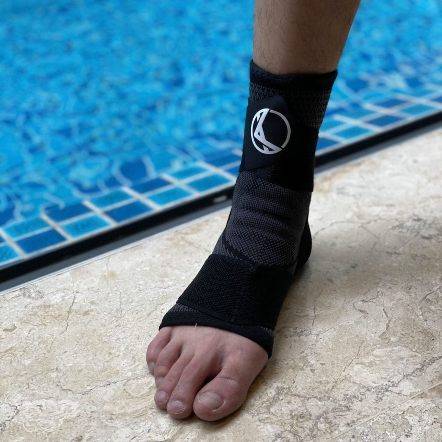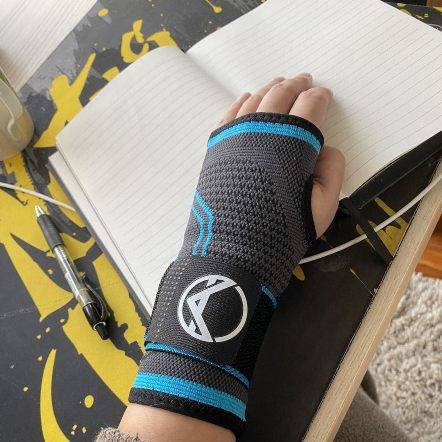
NOVEMBER 30, 2023 | 3 Mins Read
TABLE OF CONTENTS
Lower back pain is a widespread issue, affecting a significant portion of the population at some point in their lives. Often, this discomfort becomes more pronounced and challenging during activities like walking. Addressing lower back pain specifically in the context of walking is crucial because it impacts daily mobility and quality of life.
This article aims to delve into the underlying causes, recognize symptoms, and explore practical measures for managing and preventing lower back pain during walking. Understanding these aspects is essential for maintaining an active lifestyle and minimizing the discomfort that can arise from this common ailment.

Lower back pain while walking can stem from a variety of factors, ranging from everyday habits to underlying medical conditions. It's a complex issue that requires understanding the interplay between physical health, lifestyle choices, and bodily mechanics. This section breaks down the primary causes of lower back pain during walking, offering insights into how each factor contributes to discomfort and pain.
Poor posture significantly contributes to lower back pain when walking, primarily due to the undue strain it places on the back's muscles and ligaments. Slouching or incorrect spinal alignment forces these tissues to overcompensate, leading to muscle fatigue, ligament strain, and potential spinal misalignment. Over time, this can evolve into chronic pain, as the back struggles to support the body's weight and movement. Chronic poor posture can even alter the spine's natural curvature, raising the risk of more serious conditions like herniated discs.
Carrying excess weight, especially in the abdominal area, can substantially increase the stress on the lower back. This additional burden on the spine, which is not equipped to handle such excessive load, results in increased pressure on the back muscles and spinal discs. The constant strain can lead to discomfort and pain, becoming more pronounced during activities like walking or physical exercises. The spine's alignment may also be affected, exacerbating the risk of chronic back issues.
Various medical conditions can intensify lower back pain during walking. Here are some examples:
Understanding these conditions is crucial, as each has specific symptoms and requires targeted treatment approaches to manage pain effectively and maintain mobility.
As we age, there's a natural decline in muscle strength, flexibility, and bone density, factors that are crucial for maintaining a healthy back. This decline can lead to an increased susceptibility to injuries and discomfort in the lower back. Additionally, the tendency to reduce physical activity with age can further weaken the back muscles, making them more prone to pain, especially during movement-intensive activities like walking.
Identifying the symptoms of lower back pain when walking is crucial for understanding the severity of the condition and the need for professional diagnosis. These symptoms can vary in intensity and nature, and recognizing them is the first step towards seeking appropriate treatment. Here are some common symptoms associated with lower back pain during walking:
Effectively managing and preventing lower back pain when walking involves a combination of proactive measures. These solutions focus on modifying daily habits, incorporating specific exercises, and making lifestyle changes to support back health. By understanding and applying these strategies, individuals can significantly reduce their risk of lower back pain or alleviate existing discomfort.
Improving walking posture is critical for reducing stress on the lower back. Maintaining a neutral spine, with shoulders back and chin up, helps distribute body weight evenly and reduces strain. Alongside posture correction, specific exercises strengthen the core and back muscles, providing better support for the spine. Exercises like planks, bridges, and gentle stretches improve flexibility and strength in the back, making it more resilient to pain during walking.
Using a back support brace can be an effective way to alleviate lower back pain, especially for those who spend long periods standing or walking. A well-designed back brace compression garment provides additional support to the lower back, helping maintain proper posture and reducing strain on the muscles and ligaments. It’s important to choose a brace that fits well and offers the right level of support without restricting movement.
Maintaining a healthy weight is crucial in managing lower back pain. Excess weight, particularly around the midsection, puts additional stress on the back muscles and spine. By achieving and maintaining a healthy weight through a balanced diet and regular exercise, individuals can significantly reduce the load on their lower back, lessening pain and improving overall back health. This approach not only aids in pain management but also contributes to general wellbeing.

When it comes to treating lower back pain experienced during walking, a variety of options are available, ranging from non-invasive therapies to medical interventions. These treatments aim to relieve pain, improve mobility, and address the underlying causes of discomfort. Selecting the right treatment depends on the severity and cause of the pain, and often a combination of methods yields the best results.
Knowing when to seek medical help for lower back pain, especially when it affects your ability to walk, is crucial for effective treatment and prevention of more serious conditions. Here are some guidelines to help you decide when it's time to consult a healthcare professional:
Seeing a healthcare professional ensures you get a proper diagnosis and treatment plan. Early intervention can prevent the progression of the condition and improve your chances of a full recovery.
Managing lower back pain when walking involves understanding its causes, recognizing symptoms, and adopting a range of practical solutions. If you're experiencing lower back pain, consider integrating a back support brace into your management plan. The Koprez Back Support Brace offers an effective way to support your back health and improve your quality of life. Explore the benefits it can bring to your daily routine and take a step towards a more comfortable, pain-free lifestyle. Click here to learn more about the Koprez Back Support Brace and how it can help you manage lower back pain.
References
Author

Claire Evans worked as the content marketing manager at Koprez. Claire combined a background of writing and editing, marketing, and patient education to best serve consumers, fitness enthusiasts, athletes, and anyone who relies on the Koprez brand for helpful information.
Koprez® Featured Products


"I sprain my wrist super often, so I decided to try out this sleeve. This is game-changing! I've been using it for a while now, and my wrists feel amazing. I haven't gotten in any injuries since using it too. It just makes my wrists feel so supported."
Alexis A.


"Use this for my boxing training. It is a very comfortable brace and does not move out of position during skipping ropes and sparring sessions. I use it while running too. Probably the best brace I've purchased throughout the years. It is very flexible. Makes me look like a pro! :)"
Samuel L.


"I've just got back to running after a couple of years of being plagued by injury. These compressions socks are helping give me peace of mind while I build up my distance again. They are the perfect level of compression, super comfy, and very high quality. Feel great while on a run, and looks great in the orange colour I have!"
Dave R.


"I have a weak ankle, and the Koprez ankle sleeve has been a lifesaver. Wear it every day. Super breathable and comfortable. Like wearing a cool sporty looking sock!"
James F.


"This is the best knee sleeve I've ever tried. It's now a must-have for all my exercises. A few years ago, I had an accident that damaged my knees, but with Koprez I can be active again with no knee pains at all. It's been truly amazing!"
Alex M.


"One of the best purchases I've ever made. It fits your legs all the way from top to bottom, great snug fit, gives you support and definitely helps during rehab and training."
Rafael A.


"I had a minor elbow injury, and Koprez sleeve was super supportive and definitely helped me recover faster. I still use the sleeve to prevent further injury. So far, so good. Very comfortable and does not feel hot at all. Highly recommend!"
Corey B.


"It's really been a game-changer for me. It allows me to exercise a lot longer than I used to. Now my knees don't hurt, and they're not uncomfortable at all."
Mike P.


"Great product!!"
Harold


"I have carpal tunnel, and this brace has helped me work pain-free. Love the materials, and I can feel my wrists slowly getting better, even when I don't wear them!"
Christopher J.


"I wanted to try out these sleeves to improve my squats and deadlift in the gym without worrying about injuring my knees. They stayed up throughout the entire gym session, and my knees feel super supported. Now I can do what I love for years to come. "
Corbin C.